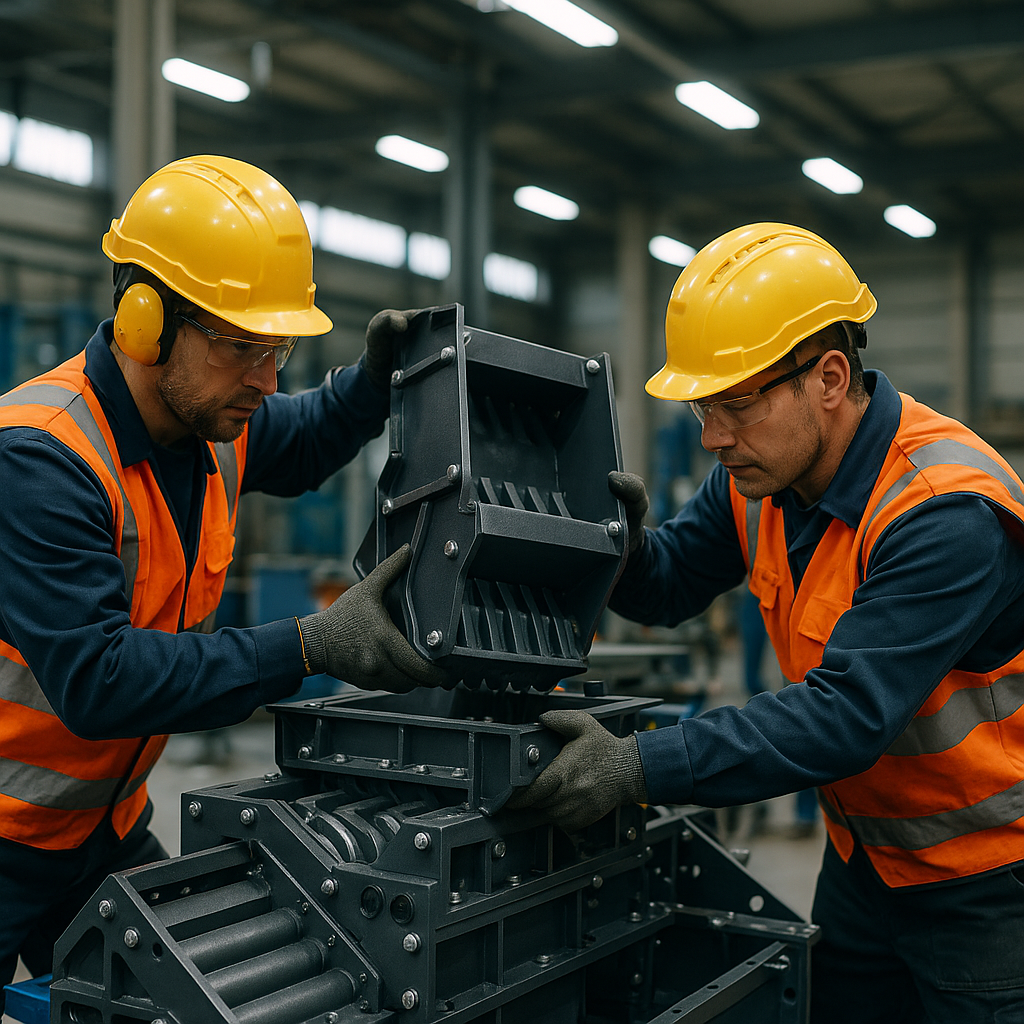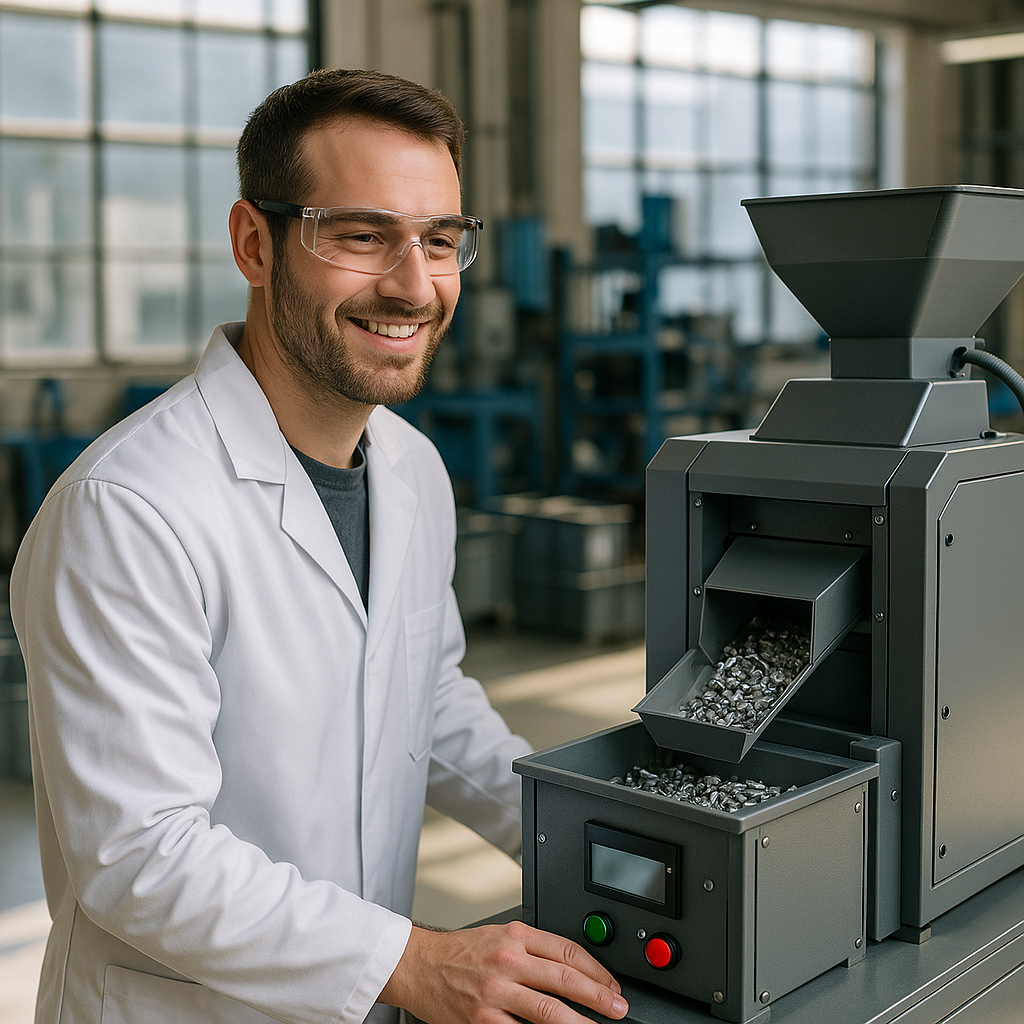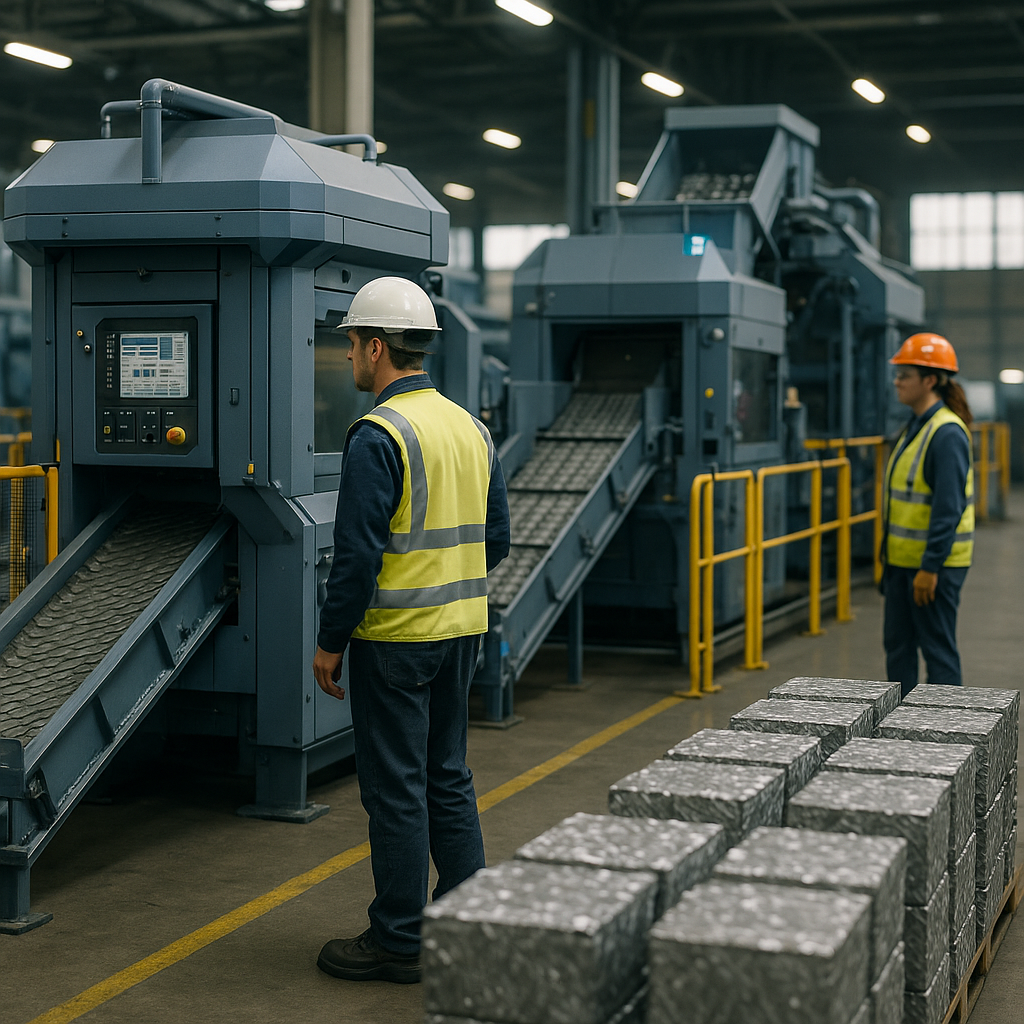5901 Botham Jean Blvd, Dallas, TX 75215
The Financial and Flexible Case for Modular Metal Recycling Systems
October 31, 2025Modular metal recycling systems offer an innovative approach to scrap metal processing. These systems feature interchangeable components that work together to create customized recycling solutions. Unlike traditional fixed systems, modular designs provide the flexibility needed to handle various metal waste streams efficiently.
At their core, these systems use a building-block approach to metal recycling. Each module serves a specific function in the recycling process, from initial sorting to final recovery. The strength of this approach lies in its ability to adapt to changing market demands and material inputs.
The flexibility of modular systems allows recycling operations to evolve without needing complete facility overhauls. When a new metal waste stream emerges or output requirements change, operators can simply reconfigure or add components. This adaptability makes modular systems especially valuable in today’s dynamic recycling market.
What are the Key Components of Modular Metal Recycling Systems?

Modular metal recycling systems consist of several specialized components working together to efficiently process and recover valuable materials from metal waste. Each component plays a specific role in transforming scrap into high-quality recyclable material.
Shredding and Size Reduction Technology
At the front end of most modular systems are industrial shredders that reduce large metal items into smaller, more manageable pieces. These powerful machines use high-speed, high-torque mechanisms to break down items ranging from car parts to industrial scrap.
Modern metal shredders feature advanced attributes such as variable speed controls and automatic overload protection. The uniform size reduction they achieve improves downstream separation efficiency and maintains consistent processing rates throughout the system.
Some advanced systems now incorporate granulators as secondary size reduction units. These machines further process shredded material into uniform particles, ideal for subsequent sorting operations.
Magnetic Separation Systems
Magnetic separators are essential components that recover ferrous metals, like iron and steel, from mixed waste streams. These units typically use powerful electromagnets or permanent magnets to attract ferrous materials and separate them from non-ferrous metals.
Drum-style magnetic separators, common in modular systems, allow continuous processing as the magnetic drum draws ferrous metals from the conveyor while non-ferrous materials continue through the system.
The strength and positioning of these magnetic systems can be adjusted based on the specific composition of the waste stream being processed, a key benefit of modular design.
Eddy Current Separation Technology
Eddy current separators are designed to recover non-ferrous metals such as aluminum, copper, and brass. These separators use rapidly rotating magnetic rotors to induce eddy currents in non-ferrous metals, creating a repulsive force that separates these metals from other materials.
The effectiveness of eddy current separation depends on particle size, with optimal performance typically achieved when processing uniformly sized materials. This underscores the importance of proper size reduction earlier in the process.
Modern eddy current separators offer adjustable magnetic field strengths and rotor speeds to optimize recovery based on the target metals.
Sensor-Based Sorting Systems
Advanced modular systems use sensor-based sorting technologies that employ various detection methods to identify and separate metals based on specific properties. X-ray fluorescence (XRF) analyzers detect metal composition at the elemental level, while near-infrared and electromagnetic sensors identify specific alloys and contaminants.
These high-tech sorting systems produce higher-purity metal streams that command premium prices in recycling markets. They can differentiate between similar-looking metals and even separate different grades of the same metal.
AI-driven sorting technologies are increasingly integrated into modular systems, improving identification accuracy and reducing the need for manual sorting.
Supporting Components and Infrastructure
Conveyor systems form the backbone of modular recycling operations, transporting material between processing stations. These can be configured in various layouts to accommodate space constraints and optimize material flow.
Air classification systems use controlled airflow to separate lightweight materials from heavier metals, enhancing overall purity. Balers compress processed materials for efficient storage and transport, while dust collection systems maintain air quality and recover fine metal particles.
Control systems integrate these components, allowing operators to monitor performance metrics and make real-time adjustments to maximize recovery rates and energy efficiency.
The truly transformative aspect of modular systems is their adaptability. Operators can add, remove, or upgrade individual modules as processing needs change or technology advances without replacing the entire system.
What are the Benefits of Modular Metal Recycling Systems?

Modular metal recycling systems are a transformative approach for processing facilities adapting to industry changes. These systems consist of interchangeable components that work together effectively, offering significant advantages over traditional fixed systems.
The main benefit of modular metal recycling systems is their scalability. Recycling operations can start with a basic setup and expand incrementally as throughput demands increase. This approach avoids the need for large upfront investments in oversized equipment that may initially be underutilized.
Another key advantage is flexibility. As the composition of incoming scrap material changes, operators can adjust their processing lines to efficiently handle various metal types. This adaptability is crucial when market conditions shift or new material streams become available.
- Reduced downtime during maintenance – Individual modules can be serviced or replaced without shutting down the entire processing line.
- Improved space utilization – Compact, efficient layouts enhance productivity in limited spaces.
- Lower initial capital investment – Begin with essential components and expand as the business grows.
- Enhanced processing precision – Specialized modules for specific metals improve separation quality.
- Future-proof operations – Systems can evolve with changing regulations and market demands.
Customization gives recycling facilities another edge. Modular systems can be tailored for specific applications, like processing copper windings from ferrous streams or separating aluminum alloys. This specialization boosts recovery rates and output quality, directly impacting profitability.
The modular approach also simplifies technology upgrades. As new sorting and processing technologies emerge, facilities can add new modules without replacing entire systems. For instance, advanced sensors, x-ray technology, or infrared scanning can be incorporated into existing lines to enhance non-magnetic metal sorting.
Maintenance becomes significantly easier with modular systems. When components need service, they can be removed and replaced without lengthy disruptions. This targeted maintenance minimizes downtime and maintains production capacity during repairs or upgrades.
Waste Robotics illustrates the power of modular design in their recycling systems. Their customizable approach allows facilities to combine different tools—like grippers and suction cups—within a single processing line. The system’s AI dynamically assigns the appropriate tool based on material characteristics, ensuring optimal sorting across varied waste streams.
For operations with fluctuating processing needs, the ability to reconfigure systems provides resilience. During slower periods, certain modules can be temporarily deactivated to conserve energy and cut operational costs without compromising core functionality.
[[artifact_table]] Comparison of Fixed vs. Modular Metal Recycling System Benefits [[/artifact_table]]The economic benefits of modular systems extend throughout their lifecycle. Beyond initial capital savings, these systems generally offer long-term value through improved material recovery, fewer operational disruptions, and extended equipment lifespan with component updates rather than full system replacements.
How Do Modular Systems Compare to Traditional Metal Recycling Equipment?

Modular metal recycling systems represent a significant shift from traditional fixed processing plants. These adaptable units offer operators flexibility that conventional systems cannot match. The core difference lies in their design philosophy: traditional systems are built as permanent installations, while modular systems consist of separate, connectable components.
Financially, modular systems typically require lower upfront capital investment, making them particularly attractive for municipalities and businesses entering the recycling market or expanding operations under budget constraints. Instead of committing to a complete facility immediately, organizations can implement recycling capacity in phases as demand grows or as funding becomes available.
Traditional fixed recycling plants maintain certain advantages in specific scenarios. They generally achieve higher processing throughput for dedicated material streams. A conventional aluminum recycling plant, for instance, can process massive volumes efficiently when handling a consistent input stream. This specialized approach works well for established operations with predictable material sources.
Adaptability in Changing Markets
Modular systems excel in versatility and responsiveness to market changes. When metal prices fluctuate or new recycling opportunities arise, modular components can be reconfigured to adapt swiftly. This capability is invaluable in today’s volatile recycling markets, where quickly adjusting processing capabilities can determine profitability.
For example, when copper prices surge, a modular system can be quickly optimized to enhance copper recovery. Traditional systems often require extensive retrofitting to achieve similar adaptability, resulting in costly downtime and renovation expenses.
The mobility factor also distinguishes modular systems. They can be relocated to serve different communities or industrial sites as needed. This portability is particularly valuable for serving remote areas where building a permanent facility would be impractical, or for responding to temporary increases in recyclable materials after construction projects or disaster cleanup efforts.
Phased Implementation Benefits
Perhaps the most significant advantage of modular systems is their capacity for staged deployment. Organizations can spread costs over time, aligning expansion with growth in material volumes or revenue. This approach reduces financial risk compared to the all-at-once investment required for traditional systems.
A municipality might start with basic sorting and compacting modules, then add specialized metal separation equipment as recycling participation increases. This gradual scaling allows for operational learning and adjustment before additional investments are made.
The reduced environmental footprint is another important benefit. Modular systems typically require less site preparation and construction. Their factory-built nature ensures more precise material utilization, with up to 90% less construction waste than building traditional facilities. This aligns well with the sustainability goals that drive recycling programs.
Operational Considerations
Despite their advantages, modular systems do have limitations. Their compact design can restrict processing capacity for high-volume operations. Organizations handling vast material streams may find traditional systems more efficient at scale.
Maintenance approaches differ significantly between the two options. Modular components can often be swapped out when repairs are needed, minimizing downtime. Traditional systems typically require on-site repairs that can halt operations for extended periods.
The industry continues to evolve, with hybrid approaches emerging that combine the best aspects of both systems. Some operations maintain a traditional processing core while using modular components for specialized materials or to handle seasonal volume fluctuations.
Conclusion: The Future of Metal Recycling with Modular Systems

Modular metal recycling systems offer a transformative approach to resource recovery in a resource-conscious world. These flexible systems provide practical solutions for processing diverse scrap metal streams while meeting the evolving needs of businesses and municipalities. As recycling regulations tighten globally, modular systems present a scalable compliance path without massive upfront investments.
The main advantage of modular systems is their adaptability to changing material streams and recovery requirements. Unlike fixed installations, modular units can be reconfigured, expanded, or redeployed as necessary. This flexibility is valuable as metal waste composition evolves with technological advancement and shifting consumption patterns. For businesses facing uncertain material volumes or entering the recycling market, these systems provide a lower-risk way to build capacity while maximizing recovery rates.
For questions about implementing modular metal recycling systems for your operation, contact Okon Recycling at 214-717-4083.
